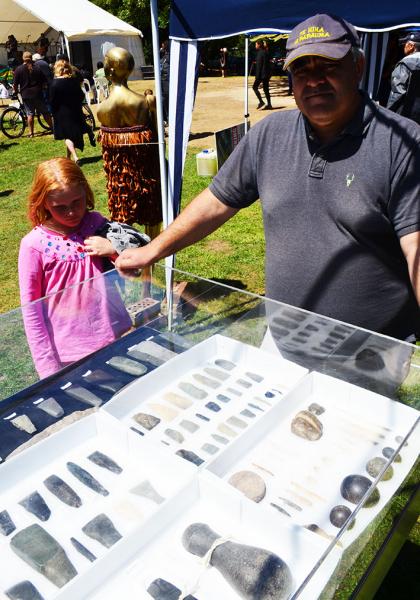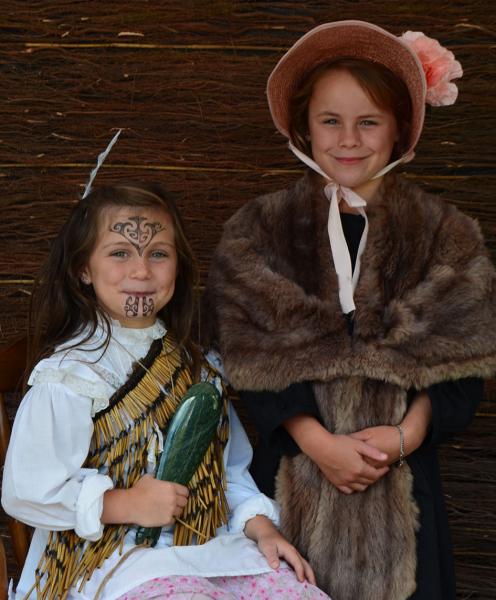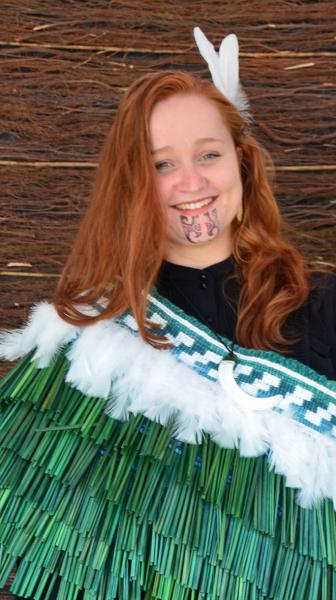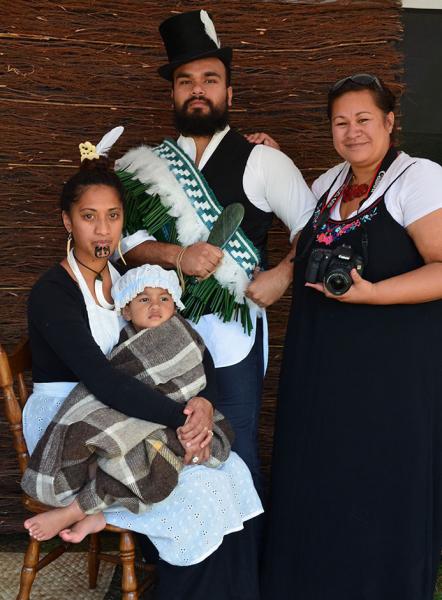Like most people, I hate having my photo taken. The subconscious barriers go up instantly, resulting in a frozen smile or the ‘rabbit caught in the headlights’ look. I can just about manage not to look defensive if my son is the one taking the photo.
It was very different at the recent Waitangi Day celebrations at Masterton’s Queen Elizabeth II Park where Kiri Riwai-Couch was taking portraits of all comers in a mix of colonial and traditional Māori attire. You may have seen her ‘Kuia’ exhibition at Aratoi last May.
Her styling has authentic links to our past. Period photography often shows Māori men and women wearing colonial top hats, lace blouses and tartan with incredible chutzpah, a look also brought to life in ‘The Piano’ and ‘River Queen’, and by contemporary artist Suzanne Tamaki, founder of the Native Sista label.
Kiri managed to bring out such a pride and grace in her subjects, barriers coming down because we had the chance to dress up and ‘play’ for a while. The photoshoot was supported by Open Wānanga and you can see Kiri’s photos on Aratoi’s homepage and Facebook, the idea being to create an online portrait gallery.
People brought along family taonga / treasures for the shoot and mine was my great great grandmother’s ostrich feather cape. When Kiri handed me one of her own family taonga – a beautiful greenstone mere that had belonged to Ben Couch, her husband’s grandfather - I felt shivers running up my arm. In that moment I felt connected to my own family history and - by Kiri’s generosity - to the Māori world. There was a spirit of sharing which went deeper than our costumes. Spokespeople at this and other Waitangi Days have noted that Māori had to find ways of entering Pakeha culture by learning to write and speak Te Reo Pakeha, operating in the commercial sphere, and countless other adaptations. But where are the photos of Victorian ladies combining corsets with piupiu, crinolines with korowai? Would that have been deemed beyond the pale by both cultures, or was it just another example of an exchange going only one way?
Aratoi director Alice Hutchison, who also organized stands at the park alongside iwi from Papauma Marae, Castlepoint, is keen to see more ongoing access to taonga; further outreach into public facilities and marae. She said the lively Treaty themed Kōrero Iti held recently at Aratoi was “a clear indication that as a museum and community, we continue to work in partnership with iwi, schools, government and the public to make our stories relevant and accessible, with more to come.”
“There is still much to be discussed in a public forum to frame present social issues. Wider conversation about historic injustices that still impact us as a community and nation need to be better understood and being addressed through the Settlement process which is healing and beneficial for this nation.”
Hutchison said Aratoi is continuing work on a major cultural redress programme planned for next year with iwi, with ongoing efforts to bring Wairarapa taonga back to the region.
Showing at Aratoi: Kiri Riwai-Couch: Mana Portraits. Nau mai haere mai!, an online gallery running until 1 March; 'John McLean - A Gathering', 13 Feb - 10 May; 'Hong Kong Song' - Photographs by Madeleine Slavick, 13 Feb - 10 May; 'Near Neighbours', 13 Feb - 10 May. Event: Artist talk by John McLean, Sat 14 Feb, 11am-12pm.

Robin Potangaora was on hand to talk about a collection of Māori artifacts found in the 1920s at Akitio, where his hapu has ancestral links. The objects are now in the Aratoi collection and he particularly likes the ancient round weights used on flax long lines for river fishing. Despite being a Kahungunu Treaty negotiator, Robin says he learnt a lot from the recent Korero at Aratoi: “It was upbeat…because the presenters came to inform us but also to entertain.”

Atahua and Madison.

Eilish Carmichael was thrilled when kuia told her she looked very authentic of Ngāti Porou, the iwi she is from which is known for having Māori with red hair.

Kiri with a whanau ready to be photographed.